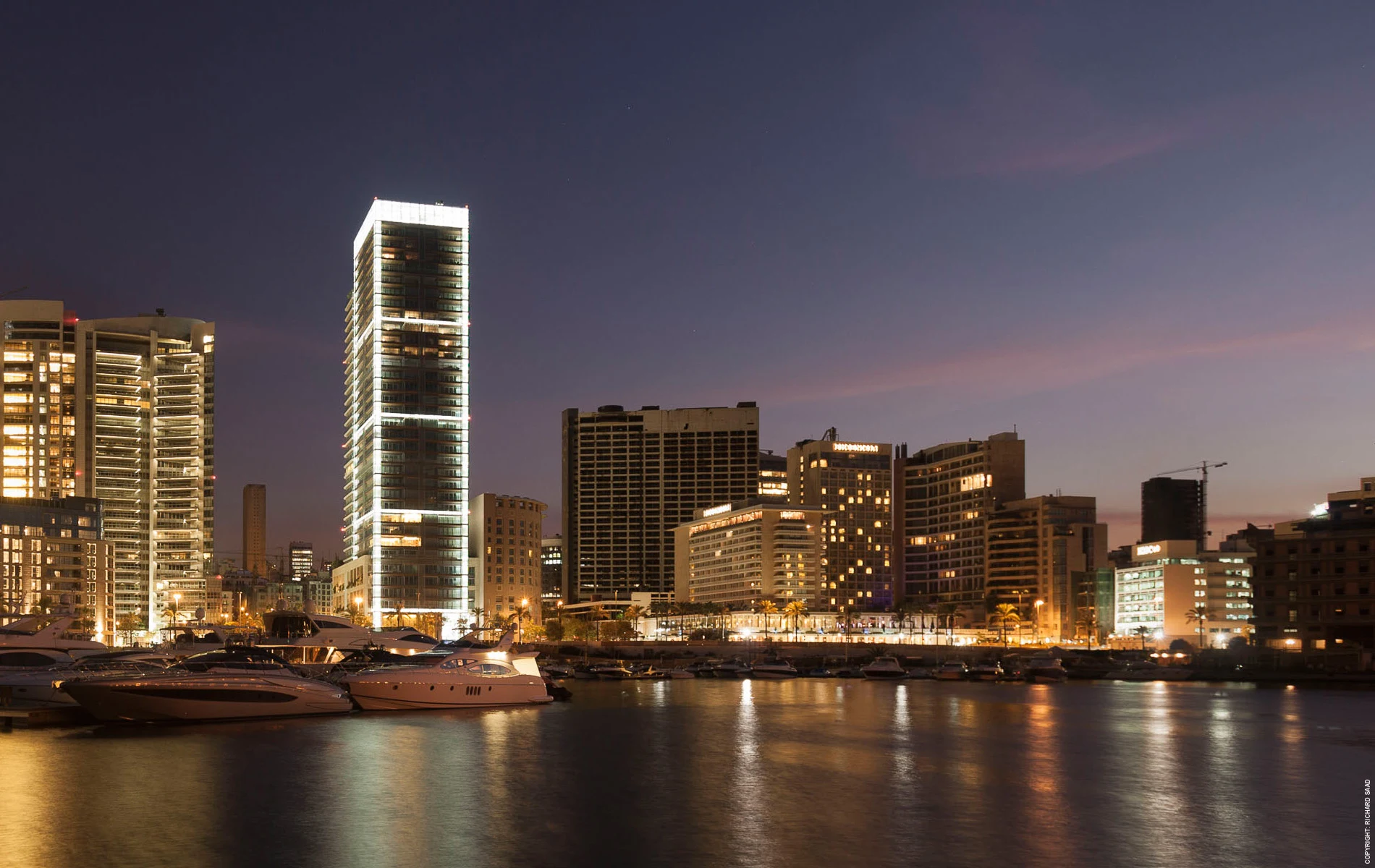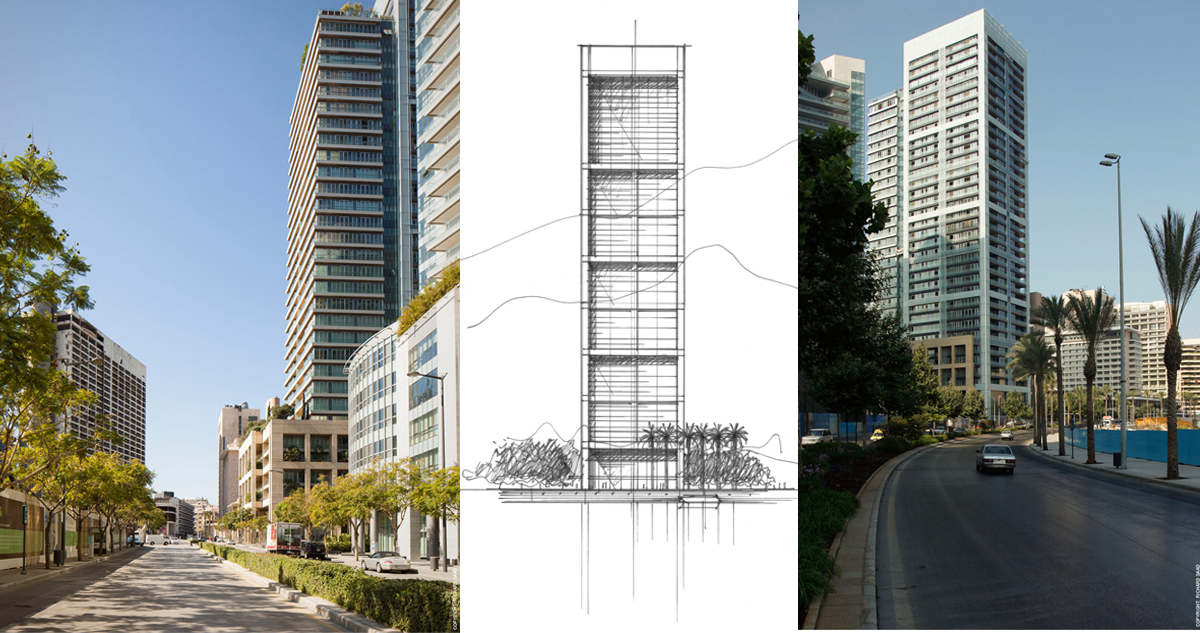Lebanese Architectural Style: Discovering the Unique Beauty
Foreword
This is the fourth and last part of an Academic study-research series about Lebanese traditional architecture; Although the information in this article is closely related to the others, it can be read individually depending on each topic.
➤ Read also: You are advised to read it sequentially to better understand and assimilate it as required. If you haven't read the previous articles yet, please do it now! Please click here for the third part, here for the second part, and here for the first part.
Enjoy the reading!
The Traditional Architecture Characteristics and Its Elements (Part 4)
The assemblage of houses as groups is by itself a factor of satisfaction; Regardless of what resulted from this merger (the act of grouping, I meant) and whether considered a positive factor or not, it has created some sort of harmony between the natural surroundings and this grouping.
 |
| Lebanese Village in Metn: The Graduation form, pinterest.com |
This specific combination will lead later to the emergence of a deep relationship between the Lebanese individual and his natural environment. Starting from this point forward, we were witnessing the birth of the traditional Lebanese village base that resulted from this relationship. In other words, we can define this relationship as being between every Lebanese village and its landscaping.
The villages were formed in complete harmony with their surrounding landscape. The foundation of this harmony is the simplicity in the design and the graduation form. How is that?
Well, we cannot say that our ancestors were born as architects or landscapers, or something else, absolutely not, but we cannot ignore their innate knowledge about landscaping. It might not have the same terminology but surely has the same purpose and objective. We will not be surprised at all to know that this knowledge will grow along with the need for it in the real life of each Lebanese individual for a living aim.
Destruction of the Traditional Architecture House?!
Everyone who knows the beauty of the Lebanese traditional architecture and the related traditional architecture house villages witnesses with interest the quick process of the demolition of this valuable heritage.
Unfortunately, it’s very sad to see the so-called modern architecture taking over the old traditional architecture of the Lebanese concept; It doesn’t respect any of the site integration within its surroundings' rules and conditions, especially when it comes to preserving the national heritage and culture.
The scene of new buildings rising up every day is becoming familiar across the country… In addition, the vanishing of traditional construction is growing through days and time, erasing a big part of our history and civilization, with a big decrease in the usage of natural stone.
At first, Lebanon was not prepared for the after-war prosperity; which explains the chaos in the engineering and the construction sector in general since many years ago.
The free Lebanese spirit that was the reason for the region's economic prosperity created a need for a new generation of Designers and Architects. Since the local architects were few, foreign designers with vast experience in the building industry came to Lebanon.
Even today, there is no real distinction between the civil engineer and the architect. What a shame!
 |
| On the way to disappearing! Let us save it! |
More than that, there is no public interest at all in constructions with concepts, nor in granting formal permit folders to the individuals.
The main reason, in my opinion, is the lack of education and the ignorance of the availability of specialization. Many buildings were built by civil engineers instead of architects, and many projects need direct supervision from either of them.
Another reason for this rapid change is based on the attitude of some Lebanese investors and businessmen, who are open to all types of development and investment, but often turn off cultural values if those conflict with their material interests.
On the other hand, some resorts have become famous and prosperous vacation destinations in no time, which leads to an unsuccessful result, because they weren’t prepared for such sudden and unexpected prosperity. Fortunately, there is a growing awareness of the importance of maintaining high-quality engineering data and practical learning.
When we face the problem of preserving national heritage, the first requirement is to avoid unnecessary demolitions, spoilage, or amputation of any of this heritage, and preserving it from any damage will come with high benefits for the public of all ages, younger or elders.
 |
| Our best heritage: Let's protect it! |
In Lebanon, the Antiquities Authority represents the public right for such affairs but nowadays it subordinates to the Ministry of Education. Currently, it operates under the supervision of the Ministry of Tourism. Any item discovered in the excavation that precedes the construction process has its own classification by a Republican Decree and according to a request from the Antiquities Authority has also control over the building environment and the entire lot built over it.
Landowners have the right to request compensation if their building is being acquired. The value of this compensation is proposed by an expert committee usually appointed by the court.
Finally, after completing the expropriation process, the Antiquities Authority will start with the investigation and restoration of the discovered items. The common problem in Lebanon is the abundance of buildings with historical landmarks, which makes the cost of their acquisition very high.
Generally speaking, the Lebanese individual does not value organized design, nor doesn’t care about beauty and well-finished work. And if there has been slight progress in recent years, there is still a lack of artistic taste among people. To get a real renaissance, there is only one way out: Educate the Lebanese citizens on how to get well-designed buildings and value their own national heritage.
Contemporary Lebanese Architecture | Conclusion
The newly used architectural elements have no longer any special resemblance to the old Lebanese traditional architectural elements previously described; That is due to the introduction of new materials that have an aesthetic role, in addition to their ease of use and implementation.
Even though many architects tried to work on some elements related to the old traditional style and merge it with the modern style, unfortunately, most of them failed to make the right integration, and their projects still look like copy-pasted work!
Having this said, it is not surprising that the architectural forms take on new and modern features looking toward the future. Therefore, we find it is slowly moving away from old architecture, and if traditional elements are used in some cases, they do not come with their traditional form and materials, but rather they are formulated in a new way and with new materials.
Contemporary Lebanese Traditional Architecture is a mixture of several civilizations and perspectives, as it interfered with the Western character, whether with its materials or with its composition, and it fused totally with it, which results in a work of magnificence and beauty.
As a live example and reference of what was told above, I choose the PLATINUM TOWER project in Beirut, an apartment and hotel building. (See next figure)
 |
| The Complete Skyline Transformation (Image Credits to Ricardo Bofill Taller de Arquitectura | archello.com) |
- Location: Beirut, Zeitouna Bay
- Project year: 2002
- Category Project: Apartments
 |
| The Platinum Tower in Beirut, Lebanon, overwhelming the seafront (Image Credits to Ricardo Bofill Taller de Arquitectura | archello.com) |
Since its inauguration, the Platinum Tower has become the symbol-icon of Beirut, as it defined clearly the skyline of the city. Whether you like it or not, it represents the future and the renovated Beirut after the war. Now, the classic question is, how much is it attached to the real Lebanese traditional architecture, using its integrity to the local environment and natural conditions? and I would answer a big NO, and here's why.
I can't personally and honestly find the right answer or understand the need for much sunlight accessing the interior in a country like Lebanon. While I can totally understand it in other cold countries like in Europe for example, their necessity of importing such concept.
No additional words about the design: It reveals a wide experience in the industry. But all over we can't ignore this beauty while passing by; A bunch of future visuals comes in the air!
.png)







